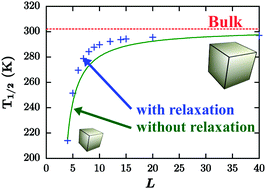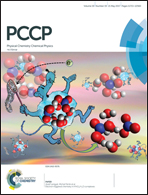Investigation of surface energies in spin crossover nanomaterials: the role of surface relaxations
Abstract
We analyse in detail the role of surface relaxations on the spin transition phenomenon through an Ising-like model solved in the inhomogeneous mean field approach. We show the surface relaxation tends to decrease the energy cost of missing bonds. Cooperative phenomena are also affected, leading to an asymmetric hysteresis loop. The underlying mechanisms are investigated by calculating thermodynamics excess quantities. Far from the spin transition, the contribution of surface relaxations to the excess internal energy, entropy and free energy is negligible, but their role becomes substantial around the transition temperature.



 Please wait while we load your content...
Please wait while we load your content...